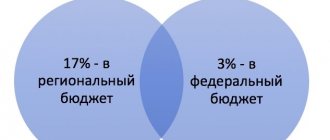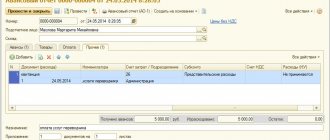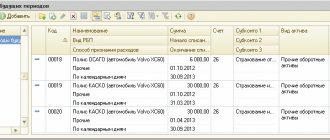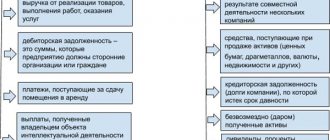Property that the recipient is not obliged to pay for or return is considered to be transferred free of charge (clause 1 of Article 572 of the Civil Code of the Russian Federation).
Transfer property valued over RUB 3,000 free of charge. commercial organizations are prohibited. As for donations to non-profit organizations and citizens, there are no such restrictions. If the transaction amount exceeds 3,000 rubles, draw up a written gift agreement. If it does not exceed, the contract can be concluded orally. This procedure follows from Articles 574 and 575 of the Civil Code of the Russian Federation.
Accounting
Income from the gratuitous transfer of goods (materials) does not arise in accounting (PBU 9/99 and PBU 5/01). Other expenses take into account the cost of transferred goods (materials), as well as expenses associated with their transfer (clause 11 of PBU 10/99).
In this case, make the following entries:
Debit 91-2 Credit 41 (10)
– reflects the cost of goods (materials) donated free of charge;
Debit 91-2 Credit 10 (60, 69, 70, 76...)
– expenses associated with the free transfer of goods (materials), for example, for delivery, are taken into account.
Free transfer of goods between legal entities agreement
A gift agreement for an amount of more than 3 thousand rubles, drawn up between commercial organizations, is a voidable transaction by virtue of clause 1 of Art. 168 of the Code or void if public interests or rights of third parties are violated (clause 2 of Article 168 of the Code).
The first copy is transferred to the warehouse as the basis for the release of materials, the second - to the recipient of the materials.
Under an agreement on the gratuitous transfer of property and use of it, one of the parties (the lender) is obliged to transfer the thing for temporary use to the other party (the borrower). And the borrower is obliged to return the relevant item in the same condition in which he received it. For the release of product samples to potential buyers in the situation under consideration, we recommend that you issue an Invoice for the release of materials to the third party (Form N M-15, approved by Resolution of the State Statistics Committee of Russia dated October 30, 1997 N 71a).
BASIC: income tax
The cost of goods (materials) and expenses associated with their gratuitous transfer are not taken into account when calculating income tax (Clause 16, Article 270 of the Tax Code of the Russian Federation). This also applies to accrued VAT.
Due to differences in accounting and tax accounting, a permanent difference is formed, which leads to the emergence of a permanent tax liability (clauses 4 and 7 of PBU 18/02). It must be taken into account simultaneously with the write-off in accounting of the value of property and other expenses associated with the gratuitous transfer (clause 7 of PBU 18/02).
Do the following wiring:
Debit 99 subaccount “Fixed tax liabilities” Credit 68 subaccount “Calculations for income tax”
– a permanent tax liability is reflected.
This procedure follows from the Instructions for the chart of accounts.
Agreement for free use or loan
This is one of the most popular forms of property transfer. According to the agreement, one party transfers property to the other party for temporary use free of charge, the second party undertakes to return the property in the same condition or in the form specified in the agreement.
At the same time, the contract takes into account the factors of normal wear and tear of the property or its “aging”. At the same time, the transfer of property is not the basis for the application or termination of the rights of third parties to it. Video: Civil law. Lecture 19. Giving. Annuity and life support with dependents
Video: Tax nuances when transferring property free of charge within a holding company.
The loan term may not be defined in the contract and may continue until the death of an individual or the liquidation of a legal entity. In this case, ownership rights to the property are not transferred to the loan recipient. By law, only things can be transferred and only for a certain period of time, but in practice, services or the result of any work can be transferred.
BASIS: VAT
The gratuitous transfer of goods (materials) is recognized as a sale (Clause 1, Article 39 of the Tax Code of the Russian Federation). Therefore, VAT must be charged on it (subclause 1, clause 1, article 146 of the Tax Code of the Russian Federation). However, in some cases, the sale of goods (performance of work, provision of services) is not subject to VAT. For example:
- provision of free assistance in accordance with the Law of May 4, 1999 No. 95-FZ;
- transfer for advertising purposes of goods, the cost of acquisition (creation) of which, taking into account input VAT, does not exceed 100 rubles. for a unit.
For more information about this, see How to calculate VAT for the gratuitous transfer of goods, works, and services.
If the gratuitous transfer of goods (materials) is subject to VAT, make the following entry:
Debit 91-2 Credit 68 subaccount “VAT calculations”
– VAT is charged on the free transfer of goods (materials).
The amount of VAT accrued on the value of property transferred free of charge does not reduce the tax base for income tax (clause 16 of Article 270 of the Tax Code of the Russian Federation).
Input VAT on costs associated with the transfer of goods (materials) should be deducted (clause 1 of Article 171, clause 1 of Article 172 of the Tax Code of the Russian Federation). Along with this, other conditions required for deduction must be met. In this case, do the wiring:
Debit 68 subaccount “VAT calculations” Credit 19
– accepted for deduction of input VAT on costs associated with the free transfer of goods (materials).
Accounting and tax accounting of property received free of charge
An exception is the receipt of property, intangible assets and property rights as a contribution to the authorized (share) capital of business companies and partnerships or share contributions to mutual funds of cooperatives, subject to the use of the received property for transactions recognized as objects of taxation in accordance with Chapter 21 of the Tax Code of the Russian Federation (p. 11 Article 171). Deductions of tax amounts specified in clause 11 of Art. 171 of the Code, are made after the registration of property, including fixed assets and intangible assets, and property rights received as payment for a contribution (contribution) to the authorized (share) capital (fund) (clause 8 of Article 172 of the Tax Code of the Russian Federation) .
In accordance with paragraph. 3 subp. 1 clause 3 art. 170 of the Tax Code of the Russian Federation, tax amounts subject to restoration in accordance with this subclause are subject to deduction from the receiving organization in the manner established by Chapter 21 of the Tax Code of the Russian Federation. The amount of the restored tax is indicated in the documents that formalize the transfer of the specified property, intangible assets and property rights.
The documents that formalize the transfer of property and which indicate the amounts of VAT recovered by the participant are stored by the organization in the journal of received invoices and are registered in the purchase book as the right to tax deductions arises in the manner established by Art. 172 of the Tax Code of the Russian Federation (paragraph 4, paragraph 5, paragraph 3, paragraph 8 of the Rules for maintaining logs of received and issued invoices, purchase books and sales books for value added tax calculations, approved by the Decree of the Government of the Russian Federation of December 2, 2000 No. 914).
Example 5. The company received an object of fixed assets as a contribution to the authorized capital from one of the participants (legal entity). The cost of the object (including VAT, subject to recovery from the founder - the transferring party) is recognized as equal to 590,000 rubles, which corresponds to the nominal value of the founder’s share in the authorized capital of the LLC. The value of the fixed assets agreed upon by the participants does not exceed the value determined by an independent appraiser. The residual value of the received object, according to the tax accounting data of the transferring party, is 500,000 rubles; the restored amount of VAT is RUB 90,000.
The following entries must be made in the company's accounting records:
D 08, subaccount 4 “Acquisition of fixed assets” - K 75 “Settlements with founders”, subaccount 1 “Settlements for contributions to the authorized (share) capital” - 500,000 rubles. — reflects the cost of the fixed asset; D 19 “Value added tax on acquired assets”, subaccount 1 “Value added tax on the acquisition of fixed assets” - K 75-1 - 90,000 rubles. — VAT indicated in the acceptance certificate is reflected; D 01 - K 08-4 - 500,000 rub. — a fixed asset facility was put into operation; D 68 “Calculations for taxes and fees” - K 19-1 - 90,000 rubles. — accepted for VAT deduction.
If an organization received funds free of charge and subsequently spent them on the purchase of goods (works, services), property rights, then the amounts of VAT presented upon the acquisition of property are accepted for deduction in accordance with the provisions of Art. 171 and 172 of the Tax Code of the Russian Federation on the basis of invoices, documents confirming the actual payment of tax amounts when importing goods into the customs territory of the Russian Federation and payment of tax amounts withheld by tax agents, or on the basis of other documents in the cases provided for in clauses 3, 6-8 Art. 171 of the Tax Code of the Russian Federation, after registration of the specified goods (works, services), property rights and in the presence of relevant primary documents (letter of the Ministry of Finance of Russia dated June 6, 2007 No. 03-07-11/152).
Income tax _
According to paragraph 2 of Art. 248 of the Tax Code of the Russian Federation, for profit tax purposes, property (work, services) or property rights are considered received free of charge if their receipt is not associated with the recipient’s obligation to transfer property (property rights) to the transferor (perform work for the transferor, provide services)10. In accordance with paragraph 8 of Art. 250 of the Tax Code of the Russian Federation, income in the form of property received free of charge, regardless of whether it was transferred by a legal entity or an individual, with the exception of the property specified in Art. 251 of the Tax Code of the Russian Federation, for tax purposes, profits are classified as non-operating income that forms the tax base for VAT - 270 rubles. The useful life of the equipment is 3 years. The method of calculating depreciation is linear.
The organization has the right to deduct the amount of VAT presented by a specialized company for the work performed on the installation of equipment after registering the work performed if there is an invoice from the company.
Installed equipment, which is an object of fixed assets, is accepted for accounting at its original cost, which is formed on the basis of the market value of equipment received free of charge that requires installation, as well as the costs of its installation, carried out by a specialized company.
The following entries must be made in the organization's accounting records:
D 07 “Equipment for installation” - K 98-2 - 8000 rubles. — equipment received free of charge that requires installation is reflected at market value; D 08 - K 07 - 8000 rub. — the transfer of equipment for installation is reflected; D 08 - K 60 - 1500 rub. (1770 rubles - 270 rubles) - reflects the cost of equipment installation work; D 19 - K 60 - 270 rub. — the presented VAT is reflected; D 68, subaccount “VAT” - K 19 - 270 rubles. — accepted for VAT deduction; D 60 - K 51 - 1770 rub. — paid for installation work; D 01 - K 08 - 9500 rub. (RUB 8,000 + RUB 1,500) — installed equipment is accepted for accounting; D 68, subaccount “Income tax” - K 77 “Deferred tax liabilities” - 360 rubles. (RUB 1,500 ? 24%) - the deferred tax liability is reflected.
For accounting purposes, equipment received free of charge is other income, which is reflected by posting:
D 09 “Deferred tax assets” - K 68, subaccount “Income Tax” - 1920 rubles. (8000 rub. ? ? 24%).
Every month, starting from the month following the month the fixed asset item was accepted for accounting, until its cost is fully repaid or deregistered, the organization reflects in its accounting records the amount of accrued depreciation in the amount of 263.89 rubles. [8000 rub. + (1700 rub. - 270 rub.) : : 3 years : 12 months]. As depreciation is calculated, the organization recognizes other income in the amount of RUB 222.22. (8000 RUR: 3 years: 12 months).
The following entries are made in accounting:
D 20 - K 02 - 263.89 rub. — depreciation has been calculated; D 98-2 - K 91-1 - 222.22 rubles. — other income is recognized; D 68, subaccount “Income Tax” - K 09 - 53.33 (222.22 rubles ? 24%) - reflects the decrease in the deferred tax asset; D 77 - K 68, subaccount “Income Tax” - 10 rubles. (360 rubles: 3 years: 12 months) - a decrease in deferred tax liability is reflected; D 99 “Profits and losses” - K 68, subaccount “Income Tax” - 53.33 rubles. (RUB 8,000 : 3 years : 12 months ? 24%) - reflects a permanent tax liability.
For the purposes of taxable profit, income (expenses) are also taken into account in the form of a positive (negative) exchange rate difference arising from the revaluation of funds and other property received in the form of gratuitous assistance and the value of which is expressed in foreign currency (letter of the Ministry of Finance of Russia dated April 16, 2007 No. No. 03-03-06/1/238).
Income for the purposes of taxation of profits of organizations in accordance with clause 8 of Art. 250 of the Tax Code of the Russian Federation recognizes income generated by an organization in connection with the use of property received under agreements for gratuitous use. The procedure for assessing income associated with the gratuitous receipt of property rights is not established by the Tax Code of the Russian Federation. In this regard, the taxpayer has the right to independently determine this procedure. The Ministry of Finance of Russia, in letter dated May 7, 2007 No. 03-03-06/4/54, expressed the opinion that when receiving property rights (for example, the right to use property) free of charge, the taxpayer can assess income based on VAT - 7,200 rubles. The market value of renting a similar car for a period of one year is 100,000 rubles.
The organization assessed the value of the acquired right based on the market value of the lease of similar property, and this value is significant for the organization. During the term of the gratuitous use agreement, the cost of the acquired right is written off as expenses for ordinary activities.
The borrower is obliged to maintain the thing received for gratuitous use in good condition, including carrying out current and major repairs, and bear all expenses for its maintenance, unless otherwise provided by the agreement for gratuitous use (VAT based on an invoice of a specialized organization; D 68, subaccount “VAT” - K 19 - 7,200 rubles - accepted for deduction of VAT; D 60 - K 51 - 47,200 rubles - the cost of repairs to a specialized organization was paid;
upon expiration of the contract
K 001 - 500,000 rub. — the cost of the car is written off from the organization’s off-balance sheet account.
1 Guidelines for accounting of fixed assets were approved by order of the Ministry of Finance of Russia dated October 13, 2003 No. 91n.
2 The accounting regulation “Income of the organization” PBU 9/99 was approved by order of the Ministry of Finance of Russia dated May 6, 1999 No. 32n.
3 The accounting regulation “Accounting for inventories” PBU 5/01 was approved by order of the Ministry of Finance of Russia dated June 9, 2001 No. 44n.
4 The chart of accounts for accounting the financial and economic activities of organizations and the Instructions for its application were approved by Order of the Ministry of Finance of Russia dated October 31, 2000 No. 94n.
5 The accounting regulation “Accounting for fixed assets” PBU 6/01 was approved by order of the Ministry of Finance of Russia dated March 30, 2001 No. 26n.
6 When determining the current market value, data received in writing from manufacturing organizations on prices for similar fixed assets, information on the price level available from state statistics bodies, trade inspectorates, as well as in the media and specialized literature, expert opinions ( for example, appraisers) on the value of individual fixed assets.
7 The accounting regulation “Accounting for intangible assets” PBU 14/2000 was approved by order of the Ministry of Finance of Russia dated October 16, 2000 No. 91n.
8 The accounting regulations “Expenses of the organization” PBU 10/99 were approved by order of the Ministry of Finance of Russia dated May 6, 1999 No. 33n.
9 The accounting regulation “Accounting for financial investments” PBU 19/02 was approved by order of the Ministry of Finance of Russia dated December 10, 2002 No. 126n.
10 See also letter of the Ministry of Finance of Russia dated June 8, 2007 No. 03-03-09/100.
11 See also information letter of the Presidium of the Supreme Arbitration Court of the Russian Federation dated December 22, 2005 No. 98.
Post:










